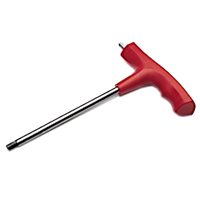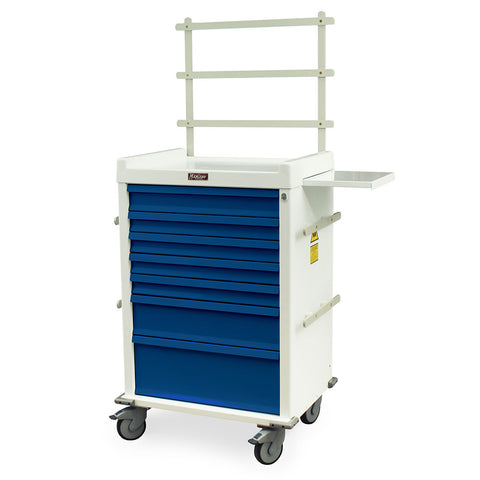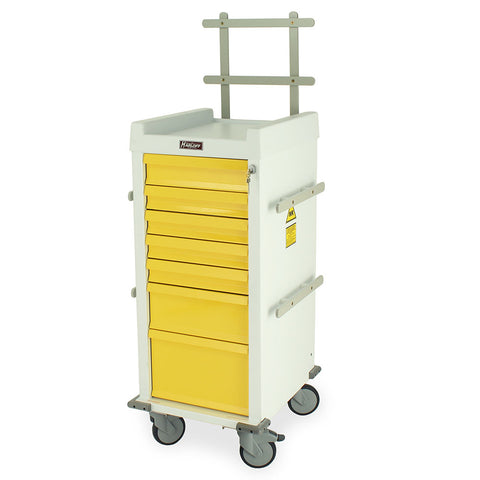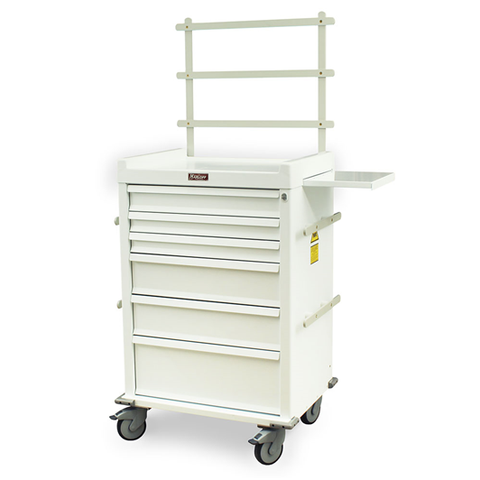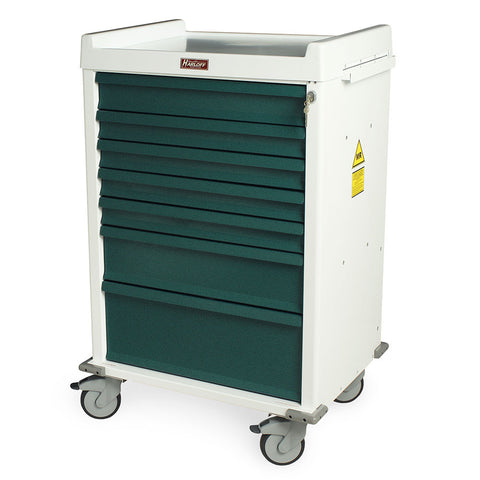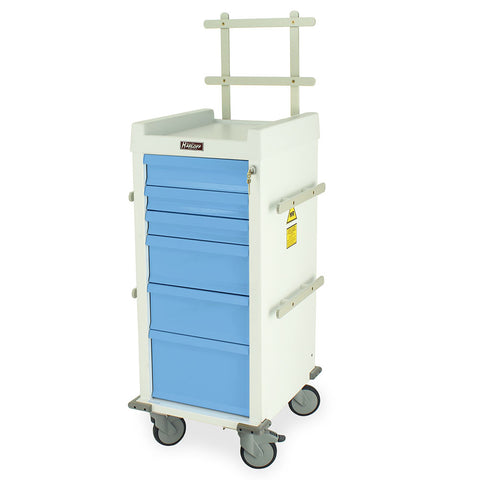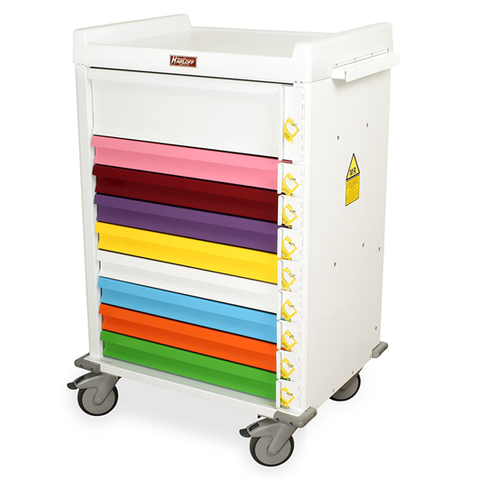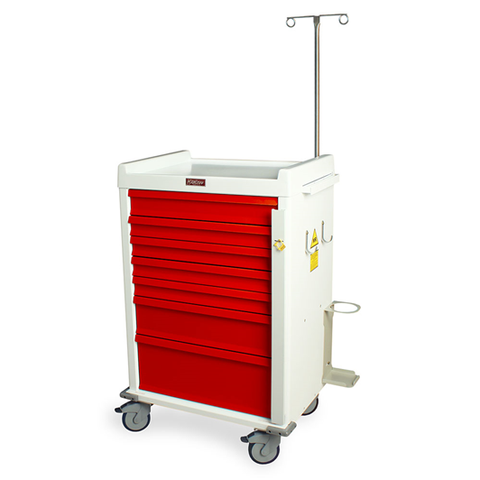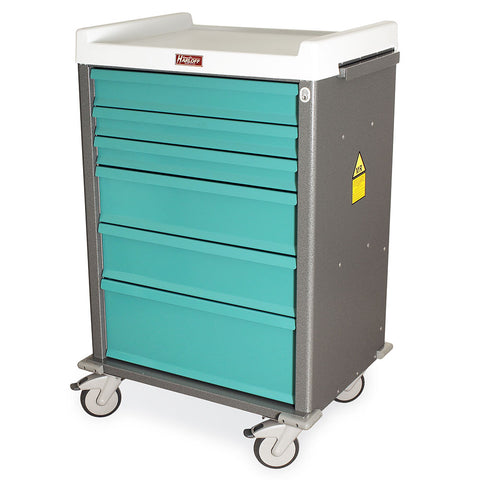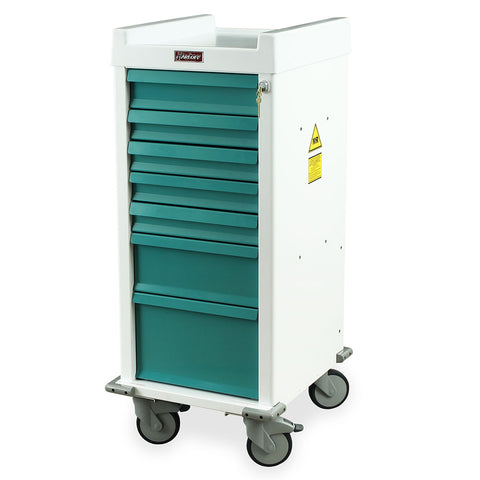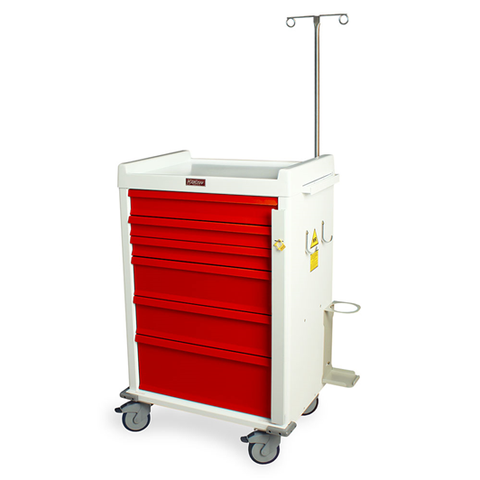Medical imaging, particularly MRI, relies on powerful magnetic fields. Using the wrong type of equipment in an MRI environment can lead to serious risks for both patients and staff. To ensure safety, all medical devices must be properly labeled as MRI-Safe, MR-Conditional, or MR-Unsafe. Understanding these labels is critical for hospital administrators, radiology staff, and healthcare buyers.
Non-magnetic equipment, such as MRI-Conditional stretchers, wheelchairs, IV poles, and monitors, helps protect patients while maintaining imaging quality. At MRIMed, every device is tested and certified for MRI use to comply with ASTM F2503 standards, ensuring optimal safety and operational efficiency.
This guide will explain the meaning of MRI labels, provide examples of labeled devices, describe the associated risks, and outline best practices for verification and usage.
Introduction to MRI Labeling Standards
Why MRI Labels Are Critical for Safety
MRI labels play a vital role in protecting patients and staff. MRI rooms contain strong magnetic fields, ranging from 1.5 to 3 Tesla or more. Ferromagnetic objects can become dangerous projectiles or interfere with imaging quality. Labels help identify equipment that is safe to use, equipment that can be used under specific conditions, and devices that must never enter the MRI environment.
Using MR-labeled equipment reduces the risk of accidents and ensures compliance with federal and institutional safety standards. Every MRIMed product, including MRI-Conditional stretchers, carries clear labeling for safe use in MRI zones.
Overview of MR Safety Classification: Safe, Conditional, Unsafe
The ASTM F2503 standard defines three primary MR safety labels:
-
MRI-Safe: Equipment that contains no ferromagnetic materials and poses no risk in any MRI environment.
-
MR-Conditional: Equipment that can be safely used under specified conditions, such as magnetic field strength, spatial gradient, and SAR limits.
-
MR-Unsafe: Equipment that cannot safely enter any MRI environment and could cause injury or damage.
These classifications help hospitals manage equipment across Zones I–IV, reducing risk and ensuring operational efficiency.
Common Misunderstandings About MRI Labels
Many hospitals make assumptions about MRI safety. For example, lightweight metals or plastic surfaces are sometimes mistakenly considered MRI-safe. Others may assume labeling is optional or unclear. Only certified, tested, and labeled equipment should be used in MRI suites. Devices must undergo rigorous evaluation to confirm MR-Safe or MR-Conditional status.
MRI-Safe Equipment: Definition and Uses
What MRI-Safe Means in Practice
MRI-Safe devices are fully non-ferromagnetic and do not interact with magnetic fields. They are safe to use in all MRI zones, including Zone IV, where the strongest magnetic fields are present. MRI-Safe devices prevent projectile hazards, ensure patient safety, and preserve image quality.
Examples of MRI-Safe Devices in Hospitals
Examples include non-magnetic stretchers, wheelchairs, IV poles, and monitoring devices. MRIMed’s MRI-Safe wheelchairs and non-magnetic IV poles are designed to provide durability, patient comfort, and safe operation in high-field MRI environments.
How MRI-Safe Devices Prevent Risks in Zone IV
By eliminating ferromagnetic components, MRI-Safe devices prevent sudden movement toward the magnet, reducing injury risks. These devices also minimize imaging artifacts, which helps radiologists achieve accurate diagnostic results. Hospitals that invest in MRIMed MRI-Safe products ensure both patient safety and operational efficiency.
MR-Conditional Equipment: Definition and Applications
Understanding MR-Conditional Labeling
MR-Conditional devices can be safely used under specific conditions, which are detailed by the manufacturer. These conditions might include limits on magnetic field strength, spatial positioning, or scan parameters. MR-Conditional labeling ensures that staff understand how and when the device can safely operate in MRI environments.
Key Conditions to Follow for MR-Conditional Devices
-
Maximum field strength (e.g., 1.5 Tesla or 3 Tesla).
-
Approved spatial gradients and device orientation.
-
Specific operational or procedural restrictions.
Following these conditions prevents equipment from becoming a hazard and avoids interference with MRI imaging.
Examples of MR-Conditional Equipment from MRIMed
MRIMed provides a variety of MR-Conditional devices, including stretchers, patient transfer boards, and monitoring equipment. Each product includes clear documentation specifying the conditions under which it can be safely used.
Equip Your Team with Tools They Can Trust
Get high-quality, MRI-dedicated equipment that supports safer scans, better positioning, and smoother patient care.
View Trusted ProductsMR-Unsafe Equipment: Risks and Warnings
Why MR-Unsafe Devices Must Never Enter MRI Zones
MR-Unsafe devices contain ferromagnetic materials that can become dangerous projectiles in a strong magnetic field. Bringing such equipment into Zone IV can result in serious injuries or fatal accidents.
Typical MR-Unsafe Devices in Healthcare Settings
Common examples include metal carts, oxygen tanks with steel components, standard surgical tools, and older hospital stretchers not certified for MRI use. Using MR-Unsafe equipment can also damage MRI systems, leading to costly downtime.
Consequences of Ignoring MR-Unsafe Labeling
Failure to adhere to MR-Unsafe warnings can result in severe injury, damage to expensive imaging equipment, and regulatory non-compliance. Hospitals must train staff to recognize and segregate MR-Unsafe devices.
How to Verify MR Labeling Accuracy
Checking Manufacturer Documentation
Always verify MR labels using manufacturer documentation. MRIMed provides comprehensive MR safety documents for all products, detailing MR-Safe and MR-Conditional status, approved conditions, and testing standards.
Using ASTM F2503 and FDA Guidelines
ASTM F2503 defines the labeling of MR-Safe, MR-Conditional, and MR-Unsafe devices. Compliance with these standards, alongside FDA guidance, ensures equipment is safe for the MRI environment.
Visual Inspection and Magnetic Testing
Staff should visually inspect equipment for ferromagnetic components and conduct magnetic tests when labels are missing or unclear. MRIMed devices undergo full testing to confirm safety in MRI zones, eliminating uncertainty.
Best Practices for Using Labeled MRI Equipment
Staff Training and Awareness Programs
Healthcare facilities must provide training on MRI safety labels, handling protocols, and emergency procedures. MRIMed offers guidance on the proper use of MRI-Conditional and MRI-Safe equipment.
Workflow Protocols in MRI Suites
Hospitals should establish clear protocols for equipment movement, patient transfers, and device positioning within MRI zones. Using MRI-Conditional stretchers correctly ensures efficiency and reduces risks.
Maintenance and Regular Inspections
Routine maintenance, cleaning, and inspections help maintain MRI safety. MRIMed recommends annual checks and adherence to ASTM F2503 labeling requirements to prevent accidents and prolong device lifespan.
FAQ:
1. What do MRI-Safe, MR-Conditional, and MR-Unsafe labels mean?
MRI-Safe devices have no magnetic risk, MR-Conditional devices can be used under specific conditions, and MR-Unsafe devices must never enter MRI zones.
2. Can MR-Conditional devices be used in all MRI rooms?
No, they must only be used under the conditions specified by the manufacturer.
3. How often should labeled equipment be inspected?
Inspect at least annually or per manufacturer recommendations.
4. Are plastic devices always MRI-Safe?
Not always; only tested and labeled devices are safe for MRI use.
5. What to do if a device’s label is missing or unclear?
Do not use it in MRI zones until verified by documentation or magnetic testing.
Related Articles
